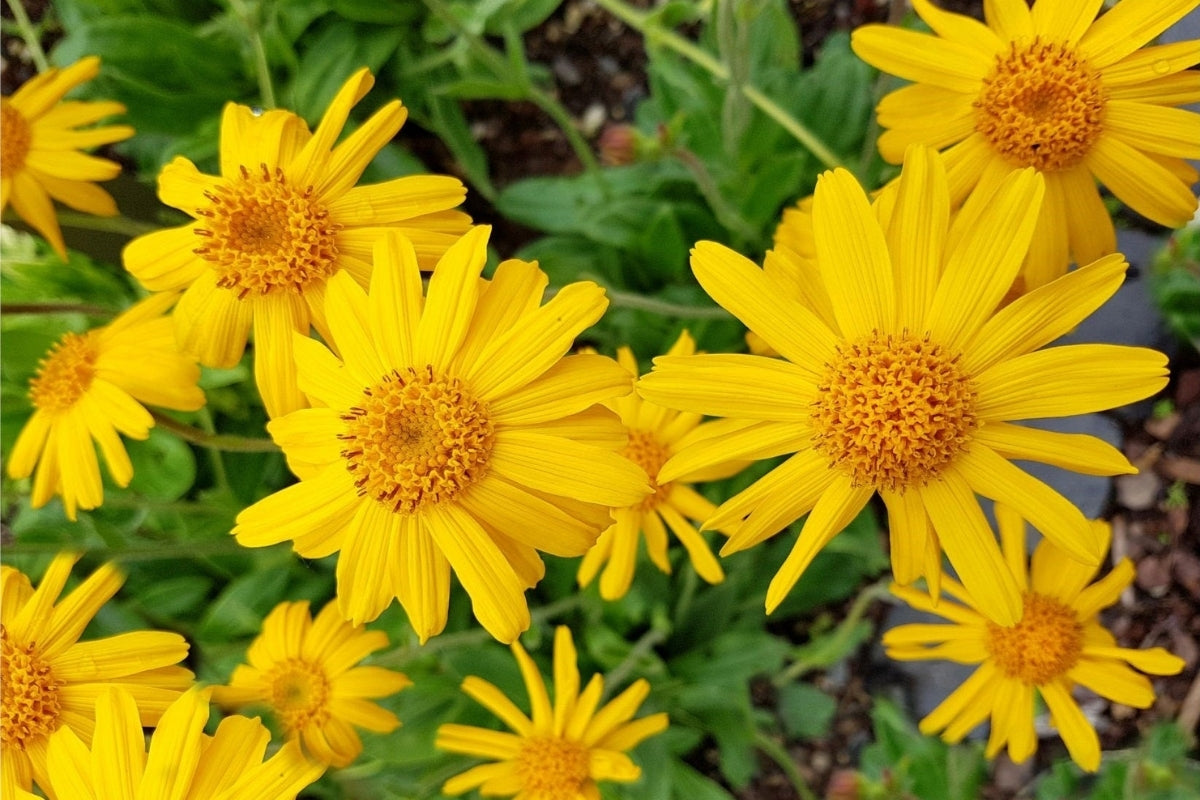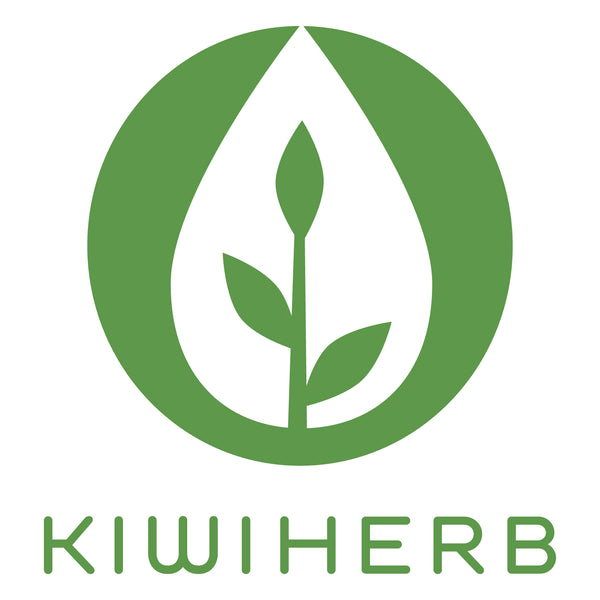- Home
- Herb Profiles
- Arnica
Arnica
Traditionally, mountain communities used Arnica to treat bruises, sprains, and muscle pain, often applying crushed flowers directly to the skin.
Over time, its use spread beyond local traditions, becoming an important herb in Western herbal medicine and later inspiring its incorporation into homeopathic remedies worldwide.
Herbalists prized it for its ability to reduce inflammation and promote healing, making it a staple in folk remedies.
It has been the subject of numerous scientific studies and reviews, and it is approved for external use in the German Commission E Monographs for injuries and consequences of accidents—e.g., haematoma, dislocations, contusions, oedema due to fracture, rheumatic and joint problems.

Botanical name: Arnica montana
Common name: Mountain Tobacco, Leopard's bane and Wolfsbane
Part used: Flowers
Frequently asked questions
What is Arnica used for?
Arnica is used topically to reduce bruising, swelling and pain. It is traditionally used to sped up the rate of healing, whether this is healing cuts, lacerations, insect bites, chilblains or muscle sprains. Helenalin, a constituent in Arnica, is responsible for these effects due to its ability to inhibit inflammatory pathways. It is often recommended for post-exercise soreness and soft-tissue injuries.
The only instance Arnica is used orally is in homeopathy. Homeopathic medicines are very different to herbal medicines, as homeopathic remedies are extremely diluted and contain microscopic amounts of the original substance. Despite this dilution, many people report positive outcomes for pain and bruising after surgery or injury.
Which part of Arnica has the highest concentration of active constituents?
The flowers of the Arnica (Arnica montana) plant contain the highest concentration of active constituents.
What are the active constituents in Arnica?
Sesquiterpene lactones (helenalin). These actives are toxic internally; therefore, their actions are indicated for topical use.
- Helenalin inhibits transcription factor NF-κB signalling and suppresses pro-inflammatory cytokines such as TNF-α. Resulting in potent anti-inflammatory and analgesic effects when applied to the skin. Helenalin’s antimicrobial action is cytotoxic to rapidly diving cells.
Flavonoids (quercetin, luteolin and kaempferol).
- These flavonoids inhibit inflammatory enzymes, slowing the release of prostaglandin and leukotriene synthesis. They also scavenge reactive oxidative species (ROS), protecting tissues from oxidative damage.
Essential oils (thymol and camphor).
- Essential oils exert antimicrobial effects by disrupting microbial cell membranes. Camphor has a mild irritant effect, which stimulates circulation and encourages blood flow to the affected tissue.
Phenolic acids (caffeic acid and chlorogenic acid).
- Phenolic acids produce anti-inflammatory and antioxidant effects by blocking NF-κB activation and scavenging ROS.
Does Arnica get rid of inflammation?
Yes, Arnica has an anti-inflammatory action. This means it lowers the inflammatory response that is triggered when there is physical trauma to the body, resulting in less swelling and pain. The active compounds in Arnica, particularly helenalin, inhibit proinflammatory molecules such as NF-κB, which is a key driver of inflammation.
Topical application of Arnica may also help ease symptoms of inflammatory disorders such as osteoarthritis and rheumatoid arthritis. In one study, topical Arnica gel was found to be as effective as ibuprofen gel in managing symptoms of osteoarthritis affecting the hands.
How much Arnica should I take for bruising?
As Arnica can only be used topically, it is often found in a cream.
It is important to use a cream that contains 10% to 25% Arnica tincture.
Apply a small amount of Arnica cream to the affected area three to four times daily for the acute stage of injury, then move down to twice daily as symptoms improve.
It is important to avoid applying Arnica to broken skin, as it is easily absorbed and may cause irritation.
How much Arnica is safe to consume?
Arnica is unsafe for oral consumption as a liquid extract form due to the presence of helenalin. Helenalin interferes with liver function and may cause gastroenteritis, nausea, dizziness and cardiac issues. Therefore, non-homeopathic oral use is not recommended. Homeopathic Arnica is highly diluted and considered safe for internal use. It is commonly used for trauma and post-surgical recovery.
Topical applications including creams, balms and gels are considered safe when used on unbroken skin for short-term relief of bruises, sprains, inflammation and muscle soreness.
Does Arnica help you heal faster after surgery?
Homeopathic Arnica is often recommended to prevent bruising, pain and swelling, and accelerate healing after surgery.
While there is limited scientific evidence to support this, some studies have reported the effects of Arnica on post-operative pain are largely comparable to standard anti-inflammatories such as ibuprofen.
Arnica is especially popular in cosmetic surgery recovery and dental procedures for managing soft tissue trauma.
Can you use Arnica on children?
Yes, topical Arnica is safe to use on children. However, care should be taken to apply it only to unbroken skin and avoid near the eyes and mucous membranes. It can help relieve bruising, swelling and minor aches from bumps or falls. Making it a useful addition to a family first aid kit.
Oral use of non-homeopathic Arnica is not recommended for children.
Can I take Arnica while pregnant or breastfeeding?
Topical Arnica is safe for use during pregnancy and while breastfeeding when applied to unbroken skin. However, internal use of non-homeopathic Arnica should be avoided during these times due to potential risks of toxicity and adverse effects.
Who should not use Arnica?
Arnica should be avoided by people with a known allergy to the Asteraceae family. Those with sensitive skin should do a patch test before using topical Arnica-based products.
How do you grow Arnica?
Growing Arnica (Arnica montana) in New Zealand works best in a cool, temperate region with well-draining and slightly acidic soil to mimic its native alpine environment.
Choose a sunny to partially shady location for planting and avoid overly rich or wet soils.
Arnica prefers poor, sandy or rocky soils; therefore, raised beds or sloped areas can assist drainage.
Water the seeds moderately and avoid excessive fertilisers use, as Arnica thrives in low-nutrient conditions.
When is the best time to plant Arnica?
In New Zealand, the best time to plant Arnica (Arnica montana) is in early spring (August to October) or autumn (March to May), depending on your region’s climate. Spring planting allows for a full growing season, while autumn planting works well in milder areas, giving the roots time to establish before winter.
If you are growing from seed, it is recommended to cold stratify the seeds for 4–6 weeks before planting to increase germination. Cold stratifying can be done by placing seeds in the fridge wrapped in a moist paper towel. in the fridge before planting to improve germination.
When is the best time to harvest Arnica?
In New Zealand, the best time to harvest Arnica(Arnica montana) is during late spring to early summer, when the flowers are fully open.
This is when the plant contains the highest concentration of active compounds like helenalin.Harvest the flower heads on a dry, sunny day after the morning dew has evaporated to preserve the active compounds.
Where is Arnica native to?
Arnica (Arnica montana) is native to the mountainous regions of Europe, particularly the Alps, Pyrenees, and Carpathians, as well as parts of Central and Northern Europe.
It thrives in high-altitude meadows, grasslands, and forest clearings, typically in nutrient-poor and acidic soils.
Due to overharvesting and habitat loss, Arnica is considered a protected species in several countries within its native range.
References
Gaertner, K., Baumgartner, S., & Walach, H. (2021). Is homeopathic Arnica effective for postoperative recovery? A meta-analysis of placebo-controlled and active comparator trials. Frontiers in Surgery, 8. https://doi.org/10.3389/fsurg.2021.680930
Gyawali, N., Asmita Rayamajhi, Karki, D., Tamlal Pokhrel, & Adhikari, A. (2022). Arnica montana L.: Traditional uses, bioactive chemical constituents, and pharmacological activities. 61–75. https://doi.org/10.1007/978-981-19-6080-2_4
Lyss, G., Schmidt, T. J., Merfort, I., & Pahl, H. L. (1997). Helenalin, an anti-inflammatory sesquiterpene lactone from Arnica, selectively inhibits transcription factor NF-κB. Biological Chemistry, 378(9). https://doi.org/10.1515/bchm.1997.378.9.951
Nepomuceno, E., Lehn, C., & Huang, H. (2024). Is topical Arnica effective for musculoskeletal pain relief? Evidence-Based Practice. https://doi.org/10.1097/ebp.0000000000002285
Sugier, D., Sugier, P., Jakubowicz-Gil, J., Winiarczyk, K., & Kowalski, R. (2019). Essential oil from Arnica montana L. achenes: Chemical characteristics and anticancer activity. Molecules, 24(22), 4158. https://doi.org/10.3390/molecules24224158
Verre, J., Boisson, M., Paumier, A., Tribolo, S., & Boujedaini, N. (2024). Anti-inflammatory effects of Arnica montana (mother tincture and homeopathic dilutions) in various cell models. Journal of Ethnopharmacology, 318, 117064. https://doi.org/10.1016/j.jep.2023.117064

